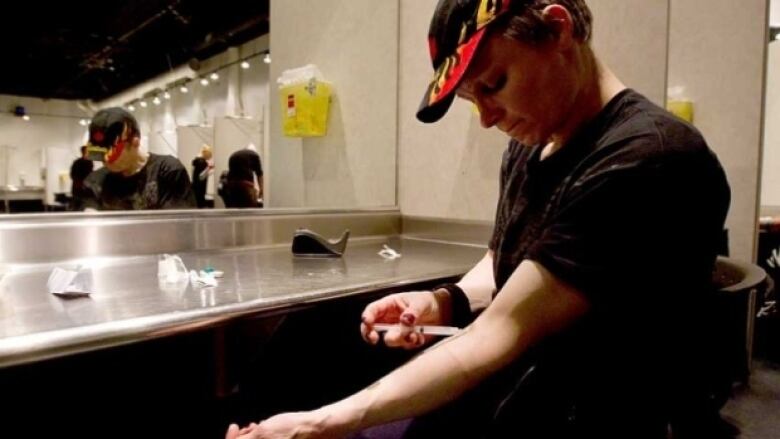Hamilton needs a safer injection site: Mayor

A Hamilton mother overdosed and died Wednesday.
She had visited the AIDS Network's needle exchange not long before. Her loss hurts, says volunteer Sherry Hiltz but this is hardly the first time people at the program have faced that kind of pain.
"There are a lot of overdoses. A lot," she said. In a recent stretch, there were four overdoses in the city in just a week.
"You see them come in every day. You get to know them. They open up and tell you about their life a bit."
And then, sometimes, they're gone. Leaving behind children and families to pick up the pieces.
- Hamilton LHIN has most opioid overdose deaths in province over 5 years
- She found her son dead of an overdose now she wants safer injection sites
New data shows that there have been more opioid-related deaths in the Hamilton LHIN over a five-year period than anywhere else in the province.
The study from the Institute for Clinical Evaluative Sciencesalso shows that there were 35,413 people in Hamilton takingopioidsas part of Ontario's publicly funded drug benefit plan in 2015.
That's almost 11,500 more people than a sold outTicatsgame at TimHortonsfield.
And they aren't intravenous drug users living on the street.
"The reality is it's not a 'poor man's addiction,'" said Mayor FredEisenberger. "It's in every strata of society."
That's one of the reasons why Hamilton needs a safer injection site, he says.
"Safe injection sites, I think, are critically important so we can not have people spreading disease throughout their addiction process,"Eisenbergersaid. "I am absolutely for it.
"Some people will worry we're encouraging drug use, and we're not."
Snapshot of Opiod use and harm in Hamilton
- 444 -Number of deaths in Hamilton LHIN,2009-13
- .63-Rate of deaths per 10,000 people
- .43 - Provincial average rate ofdeaths per 10,000 people
- 587-Number of hospital emergency visits, 2014
- 35,413- Number of people taking prescribed opiods
- 2417 - Prescription rate per 10,000 population
- 2,054- Provincial average prescriptionrate per 10,000 population
Speed a concern
Yet some people, includinga grieving motherand afederal senator, say the city is moving too slowly in its implementation of those sites.
The city is only now debating whether or not to simply study supervised injection sites, let alone debating whether or not to actually create one.
At this rate, Hamilton is still years away from a safer injection site if the city gets one at all.
For argument's sake, let's say it takes two years. Looking at the last few years in Hamilton, that means about 80 people will likely overdose and die in that timeframe.
"I lament the fact that it's going to take some time,"Eisenbergersaid, but added that it will be a "challenge to implement" and that it will take time to organize and study properly.
"You have to be able to bring the community along with you on something like this," he said.
Trying to nail down the numbers
The report from the Institute for Clinical Evaluative Sciences also underscores the difficulty in measuring just how many people are dying from opioid overdose.
Figures the city provided to CBC News earlier this year showed 91 opioid toxicity deaths in the city from 2011 to 2013. But new data from the study's researchers say there were actually 124 deaths in the city in that same timeframe.
In an email, city spokesperson Aisling Higgins attributed the discrepancy to the inclusion of deaths that include opioids and alcohol toxicity at the same time.
As well, she said, a reclassification of deaths could contribute to adifference, as the city and the researchers likely pulled data on different dates.
City public health officials have long lamented that it's difficult to discern exactly how many people die of opioid overdose, fearing that death rates are actually underreported.












_(720p).jpg)


 OFFICIAL HD MUSIC VIDEO.jpg)
.jpg)



























































































